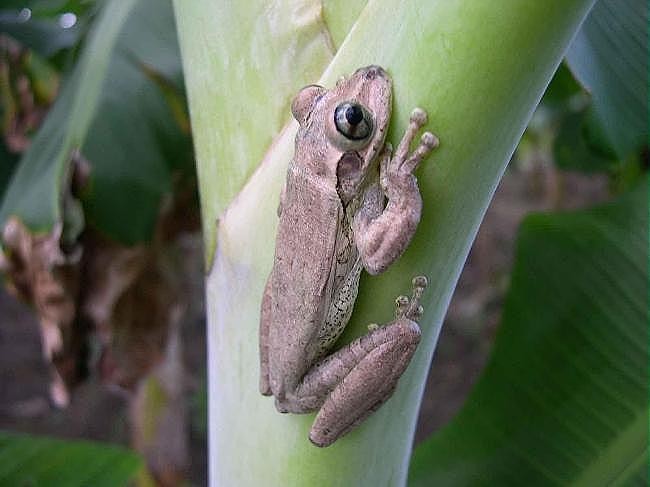Hispaniolan common tree frog
A species of Bone-cap Scientific name : Osteopilus dominicensis Genus : Bone-cap
Hispaniolan common tree frog, A species of Bone-cap
Scientific name: Osteopilus dominicensis
Genus: Bone-cap
Content
Description General Info
 Photo By http://www.batraciens-reptiles.com , used under CC-BY-SA-2.5 /Cropped and compressed from original
Photo By http://www.batraciens-reptiles.com , used under CC-BY-SA-2.5 /Cropped and compressed from original Description
The Hispaniolan common tree frog or Dominican tree frog (Osteopilus dominicensis) is a species of frog in the Hylidae family endemic to the island of Hispaniola. It is found in the Dominican Republic and Haiti.
General Info
Lifespan
5-6 years
Diet
Hispaniolan common tree frog primarily endorses an entomophagous, thriving on insects especially ants. As an indirect consequence, it aids in natural pest control by substantially diminishing insect populations.
Appearance
Hispaniolan common tree frog is a moderate-sized tree frog with a smoothly textured skin. This species showcases a combination of varying shades of green, brown, or gray, often with a pattern of darker blotches. Males can be distinguished by a yellowish substantive vocal sac. Their digits end in large, round adhesive discs enabling them to securely stick to surfaces.
Behavior
Hispaniolan common tree frog is an arboreal, nocturnal species frequently found in dense vegetation. This solitary species breeds year-round, laying eggs on temporary water bodies. Known for its distinctive calling sound, hispaniolan common tree frog use it mainly for courtship and territorial defense. Notable for its adaptability, it can thrive in a variety of habitats.
Population
Stable

 Photo By http://www.batraciens-reptiles.com , used under CC-BY-SA-2.5 /Cropped and compressed from original
Photo By http://www.batraciens-reptiles.com , used under CC-BY-SA-2.5 /Cropped and compressed from original Scientific Classification
Phylum
Chordates Class
Amphibians Order
Frogs and toads Family
Tree frogs and their allies Genus
Bone-cap Species
Hispaniolan common tree frog